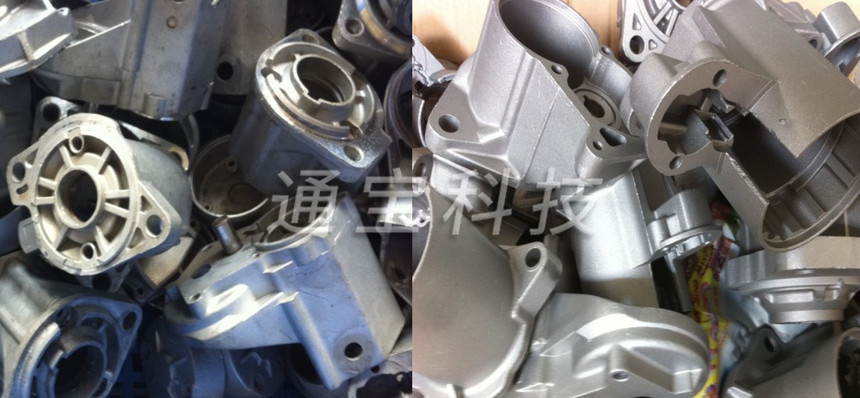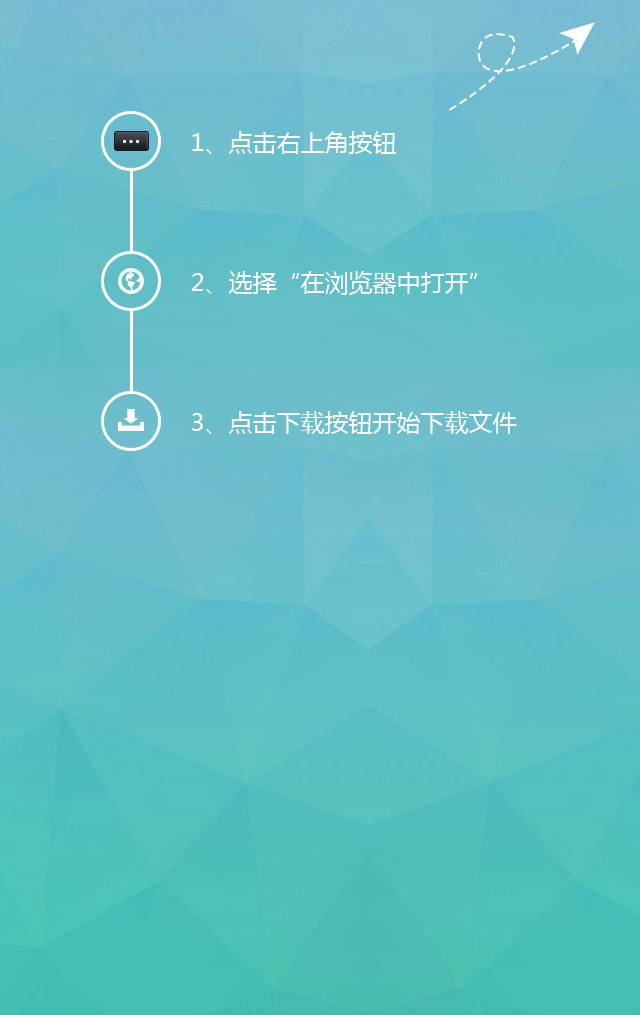Introduction to surface treatment processes such as shot blasting, shot blasting, sand blasting, etc.
Shot blast
Shot blasting is the name of a mechanical surface treatment process. Similar processes include sandblasting and shot blasting. The principle of shot blasting is to use a motor to drive the impeller body to rotate (directly drive or use a V-belt drive), and rely on centrifugal force to blast shots with a diameter of about 0.2 to 3.0 (including cast steel shots, steel wire cut shots, stainless steel shots, etc.) Type) Throw to the surface of the workpiece to make the surface of the workpiece reach a certain degree of roughness, make the workpiece beautiful, or change the welding tensile stress of the workpiece to compressive stress to improve the service life of the workpiece. By improving the surface roughness of the workpiece, the paint film adhesion of the subsequent painting of the workpiece is also improved. Shot blasting is almost used in most fields of machinery, such as shipbuilding, auto parts, aircraft parts, guns and tanks, bridges, steel structures, glass, steel plate profiles, pipe inner and outer walls, and even road surfaces, etc.
The principle of shot blasting
The shot blasting machine relies on the impeller to rotate at high speed. The abrasive in the center of the impeller is pre-accelerated by the regulator and impeller, and then sent into the blade area to throw the abrasive at high speed. The speed can exceed 100m/s. , Due to the large coverage of shot blasting, there is no need to use air pressure, and the energy efficiency is much higher than that of spray guns. The impeller is the heart of the shot blasting machine. It is directly or indirectly driven by an electric motor. Each impeller manufacturer has a unique design, which is mainly divided into single-disc and double-disc impellers.
Each impeller can be equipped with 4 to 8 blades. The single-disc impeller is lighter and designed to be curved blades; the double-disc impeller is heavier, but it is easier to install and unload the blades and accurately control the throwing of abrasives. The shape of the blade has a straight or curved design. The straight blade design is simple and can be loaded and unloaded independently. Although this blade design has a smaller cleaning range (see below) and a lower throwing speed, it is more expensive because of its low cost. universal. Curved blades are more difficult to load and unload and cost more, but they have a larger cleaning range and a higher throwing speed.
In addition, the placement of the impeller in the shot blasting chamber is also very important, such as the coverage, the distance from the workpiece, the movement range of the workpiece, the secondary bounce of abrasive or the mutual coverage of other impellers, and the convenience of maintenance and replacement. Experience has shown that inclined impellers cover the workpiece better, and several low-power impellers are more flexible and effective in operation than one high-power impeller. The shot blasting process is very lossy, including the impeller and the lining steel plate, etc., which are easy to wear, so their life is very important to the production process. If the high chromium cast steel impeller uses 48HRC hardness steel grit, the life is about 800 hours, and the steel shot is 1500 hours. The life of the hardened impeller can reach 4000 hours.
Shot peening
Definition: The process of cleaning and strengthening the surface of the substrate by the impact of high-speed pill flow.
Subject: Mechanical Engineering (first-level discipline); Surface Engineering (second-level discipline); General surface engineering terms (third-level discipline)
This content is reviewed and announced by the National Science and Technology Term Review Committee
Using shot blasting for surface treatment, the impact force is large, and the cleaning effect is obvious. However, the treatment of thin plate workpieces by shot peening can easily deform the workpiece, and the steel shot hits the surface of the workpiece (whether shot blasting or shot peening) to deform the metal substrate. Because Fe3O4 and Fe2O3 have no plasticity, they will peel off after being broken, and the oil film and The base material deforms at the same time, so the shot blasting and shot blasting cannot completely remove the oil stains on the work piece with oil stains. Among the existing surface treatment methods for workpieces, sandblasting is the best cleaning effect. Sandblasting is suitable for cleaning the workpiece surface with higher requirements. However, the current general sandblasting equipment in my country is mostly composed of primitive and heavy sand conveying machinery such as hinge dragons, scrapers, and bucket elevators.
TB-SN1200D Dry Shot Peening Machine
The amount of work and maintenance costs are high, and a large amount of dust generated during the sandblasting process cannot be removed, which seriously affects the health of the operators and pollutes the environment.
Shot peening is a surface strengthening process widely used in factories. Its equipment is simple, low in cost, not restricted by the shape and location of the workpiece, and easy to operate, but the working environment is poor. Shot peening is widely used to improve the mechanical strength, wear resistance, fatigue resistance and corrosion resistance of parts. It can also be used for surface extinction, descaling and elimination of residual stress in casting, forging, and welding parts.
The difference with shot blasting
Shot blasting uses high-pressure wind or compressed air as power, and shot blasting is generally a high-speed rotating flywheel that ejects steel grit at high speed. Shot blasting efficiency is high, but there will be dead corners, while shot blasting is more flexible but consumes a lot of power.
Although the two processes have different injection power and methods, they are aimed at high-speed impact on the workpiece, and the effect is basically the same. In contrast, shot peening is more precise and easy to control accuracy, but the efficiency is not as high as shot blasting, and the shape is complicated. Shot blasting is more economical and practical for small workpieces, and it is easy to control efficiency and cost. The particle size of the shot can be controlled to control the spray effect, but there will be dead corners, which is suitable for batch processing of workpieces with a single shape.
The selection of the two processes mainly depends on the shape of the workpiece and the processing efficiency.
Difference with sandblasting
Shot blasting and sand blasting both use high-pressure air or compressed air as power to blow it out at high speed and impact the surface of the workpiece to achieve a cleaning effect, but the selected medium is different, and the effect is different.
Comparison of sandblasting and shot blasting
After sandblasting, the dirt on the surface of the workpiece is removed, the surface of the workpiece is slightly damaged, and the surface area is greatly increased, thereby increasing the bonding strength of the workpiece and the coating/plating layer.
The surface of the workpiece after sandblasting is metallic, but because the surface is a rough surface, the light is refracted, so there is no metallic luster, and it is a darkened surface.
After shot peening, the dirt on the surface of the workpiece is removed, the surface of the workpiece is not destroyed, and the surface area is increased. Because the surface of the workpiece is not damaged during the processing, the excess energy generated during processing will lead to the workpiece matrix Surface strengthening.
The surface of the workpiece after sandblasting is also metallic, but because the surface is spherical, the light is partially refracted, so the workpiece is processed into a matte effect.
Types of pills
Cast steel shot
Its hardness is generally 40~50HRC. When processing hard metals, the hardness can be increased to 57~62HRC. Cast steel shot has good toughness and is widely used, and its service life is several times that of cast iron shot.
Cast iron shot
Its hardness is 58~65HRC, which is brittle and easy to break. It has a short life span and is not widely used. Mainly used in occasions where high intensity of shot peening is required.
Glass pill
The hardness is lower than the former two. It is mainly used for stainless steel, titanium, aluminum, magnesium and other materials that do not allow iron pollution. It can also be used for the second processing after steel shot peening to remove iron pollution and reduce iron pollution. The surface roughness of the part.
Therefore, there are 3 categories of shots: cast steel shots, cast iron shots, glass shots
Special Note:
Glass pellets for shot blasting and glass pellets for other purposes are two different concepts. The characteristic of shot peening glass pellets is that its hardness is not less than 6-7 Mohs, and it has certain toughness, and the rounding rate is not less than 90%. Road reflective glass pellets have no requirement on hardness, and ordinary glass can be used as the raw material, and the rounding rate requires a minimum of 75%.
The two prices are very different, but the appearance is almost the same. If ordinary glass shot is used for shot peening, it seems that the cost is lower, and the breakage rate is higher during shot peening, and the work piece with higher strength is almost In contrast, the total cost of a crushing has increased a lot.
Shot blasting equipment
1. Metal or non-metal projectiles can be used arbitrarily to meet the different requirements of cleaning the surface of the workpiece;
2. The cleaning flexibility is large, it is easy to clean the inner and outer surfaces of complex workpieces and the inner wall of pipe fittings, and it is not restricted by the site, and the equipment can be placed near extra-large workpieces;
3. The equipment structure is relatively simple, the investment of the whole machine is small, the wearing parts are few, and the maintenance cost is low;
4. It must be equipped with a high-power air compressor station, which consumes more energy under the same cleaning effect;
5. The cleaned surface is prone to moisture and rust again;
6. The cleaning efficiency is low, there are many operators, and the labor intensity is high.
Cleaning quality level
a. The most thorough cleaning level (Sa3)
The surface of the cleaned steel is completely uniform silver gray, with a certain surface roughness to improve the adhesion of the coating;
b. Very thorough cleaning level (Sa2.5)
There are no grease, dirt, scale, rust, corrosion products, oxides and other impurities on the surface of the cleaned steel. Shadows and color differences due to incomplete cleaning are allowed, but at least 95% per square inch The above surface has reached the level of the most thorough cleaning level, and only slight shadows and chromatic aberrations appear on the remaining parts;
c. More thorough cleaning level
There are no grease, dirt, rust and other impurities on the surface of the cleaned steel. The oxide scale, rust and old paint are removed. The slight shadow and color difference caused by the incomplete removal of rust and oxide are allowed. No more than 33% per square inch; if pitting corrosion has occurred on the surface of the steel, a small amount of rust and old paint are allowed to exist in the depth of the corrosion point;
d. Non-complete cleaning level
The surface is thoroughly cleaned, grease, dirt, loose oxide skin and loose paint skin are removed, and the oxide skin, rust, paint and coating that can not be removed with a very sharp blade are allowed to remain after cleaning. on the surface. A large number of evenly distributed metal spots appeared on the surface.
Surface roughness
Surface roughness and surface cleanliness are produced at the same time. Determining the appropriate surface roughness is as important as determining the correct cleanliness requirements.
The role of surface roughness
1) Increase the actual bonding area between the coating and the surface of the workpiece, which is beneficial to improve the bonding force of the coating;
2) The coating will generate a lot of internal stress during the curing process, and the presence of roughness can effectively eliminate the stress concentration in the coating and prevent the coating from cracking;
3) The existence of surface roughness can support the quality of a part of the paint, which is beneficial to eliminate the sagging phenomenon, and the effect is particularly obvious for the surface of vertical coating.
The factors affecting roughness are as follows:
1) The particle size, hardness and particle shape of the abrasive;
2) The hardness of the material of the workpiece itself;
3) Pressure and stability of compressed air;
4) The distance between the nozzle and the surface of the workpiece and the angle between the nozzle and the surface of the workpiece.
Several issues related to surface roughness:
1) The length of the cleaning time has almost nothing to do with the surface roughness;
2) The angle between the nozzle and the surface will affect the surface roughness, but the change is not obvious between 45 degrees and 90 degrees;
3) Using large-grain abrasives to clean difficult-to-clean surfaces can improve work efficiency, but the surface roughness will be higher. Studies have shown that abrasives with a particle size greater than 1.2mm cause higher roughness values. Re-cleaning the surface with high roughness with a small-grain abrasive can reduce the roughness to the specified requirements.
Shot peening produces a greater compressive stress on the surface than sand blasting.
Sand blasting (pensha) English name: sand blasting
Definition: The process of using the impact of high-speed sand flow to clean and roughen the surface of the substrate.
Subject: Mechanical Engineering (first-level discipline); Surface Engineering (second-level discipline); General surface engineering terms (third-level discipline)
This content is reviewed and announced by the National Science and Technology Term Review Committee
Sandblasting principle
Sandblasting is powered by compressed air to form a high-speed jet beam to spray materials (copper ore, quartz sand, emery, iron sand, Hainan sand) on the surface of the workpiece to be treated at high speed, so that the outer surface of the workpiece surface or The shape changes, due to the impact and cutting action of the abrasive on the surface of the workpiece, the surface of the workpiece obtains a certain degree of cleanliness and different roughness, so that the mechanical properties of the workpiece surface are improved, so the fatigue resistance of the workpiece is improved, and the fatigue resistance of the workpiece is increased. The adhesion between it and the coating extends the durability of the coating film and is also conducive to the leveling and decoration of the coating.
The main application range of sandblasting
(1) Workpiece coating, work-piece bonding pretreatment sandblasting can remove all dirt such as rust on the work-piece surface, and establish a very important basic pattern on the work-piece surface (usually the so-called rough surface), and it can By changing the abrasives of different particle sizes, such as flying-spread abrasives, the abrasives can reach different degrees of roughness, which greatly improves the bonding force between the workpiece and the coating and plating. Or make the bonding parts more firm and better in quality.
(2) Cleaning and polishing of rough surface of castings and workpieces after heat treatment. Sandblasting can clean all dirt (such as oxide scale, oil stains, etc.) on the surface of castings and forgings and workpieces after heat treatment, and polish the surface of the workpiece to improve the smoothness of the workpiece. , Can make the workpiece show a uniform and consistent metal color, make the appearance of the workpiece more beautiful and beautiful.
(3) Burr cleaning and surface beautification sandblasting of machined parts can clean up the tiny burrs on the surface of the workpiece and make the surface of the workpiece smoother, eliminating the hazards of burrs and improving the quality of the workpiece. And sandblasting can make small round corners at the junction of the surface of the workpiece, making the workpiece more beautiful and more precise.
(4) Improve the mechanical properties of the parts After sandblasting, the mechanical parts can produce uniform and fine uneven surfaces on the surface of the parts, so that the lubricating oil can be stored, so that the lubrication conditions are improved, and the noise is reduced to increase the service life of the machine.
(5) The function of light decoration For some special-purpose workpieces, sandblasting can achieve different reflections or matt at will. Such as the polishing of stainless steel workpieces and plastics, the polishing of jade, the matting of the surface of wooden furniture, the pattern on the surface of frosted glass, and the texturing of the surface of cloth.
Sandblasting process
1 Pretreatment stage of sandblasting process
The pretreatment stage of the process refers to the treatment that should be carried out on the surface of the workpiece before it is sprayed or sprayed with a protective layer.
The quality of the pre-treatment of the sandblasting process affects the adhesion, appearance, and moisture resistance and corrosion resistance of the coating. If the pretreatment work is not done well, the rust will continue to spread under the coating, causing the coating to fall off in pieces. After careful cleaning of the surface and the general simple cleaning of the workpiece, the life of the coating can be 4-5 times different by using the exposure method. There are many methods of surface cleaning, but the commonly accepted methods are: solvent cleaning, pickling, hand tools, and power tools.
2 Sandblasting process stage
The sandblasting process is to use compressed air as the power to form a high-speed jet beam, spray materials and other high-speed jets to the surface of the workpiece to be processed, so that the appearance of the outer surface of the workpiece is changed. Due to the impact and cutting action of the abrasive on the surface of the workpiece, the surface of the workpiece is obtained. Certain cleanliness and different roughness improve the mechanical properties of the workpiece surface.
Classification of sandblasting machine
Sandblasting machines are widely used products in abrasive jets. Sandblasting machines are generally divided into two categories: dry sandblasting machines and liquid sandblasting machines. Dry sandblasting machines can be divided into suction type and press-in type.
Suction dry sandblasting machine
1. General composition
A complete suction dry sandblasting machine generally consists of six systems, namely structural system, medium power system, pipeline system, dust removal system, control system and auxiliary system.
2. Working principle
The suction dry sandblasting machine is powered by compressed air, and the negative pressure formed in the spray gun by the high-speed movement of the airflow passes the abrasive through the sand conveying pipe.
It is sucked into the spray gun and ejected through the nozzle, and sprayed to the processed surface to achieve the desired processing goal. In the suction dry sandblasting machine, compressed air is provided.
Press-in dry sandblasting machine
1. General composition
A complete working unit of the press-in dry sandblasting machine is generally composed of four systems, namely, pressure tank, medium power system, piping system, and control system.
2. The working principle of the press-in dry sandblasting machine.
The press-in dry sandblasting machine is powered by compressed air, and the abrasive is passed through the sand valve through the working pressure established by the compressed air in the pressure tank.
Press into the sand pipe and shoot out through the nozzle, and spray to the processed surface to achieve the desired processing goal. In the press-in dry sandblasting machine, compressed air is the supply.
Matters needing attention in sandblasting work
1. You must wear protective equipment before work, and work with bare arms is not allowed. There must be no less than two people at work.
2. Gas storage tanks, pressure gauges, and safety valves should be checked regularly. The gas storage tank discharges dust once every two weeks, and the filter in the sand tank is checked once a month.
3. Check whether the ventilation pipe and the door of the sandblasting machine are sealed. Five minutes before work, the ventilation and dust removal equipment must be activated. When the ventilation and dust removal equipment fails, the sandblasting machine is prohibited from working.
4. The compressed air valve should be opened slowly, and the air pressure must not exceed 0.8MPa.
5. The blasting particle size should be compatible with the work requirements, generally between 10 and 20, and the sand should be kept dry.
6. When the sandblasting machine is working, no unrelated persons are allowed to approach. When cleaning and adjusting the operating parts, the machine should be stopped.
7. It is not allowed to use compressed air to blow dust on the body or make jokes.
8. After the work is finished, the ventilation and dust removal equipment should continue to operate for five minutes and then shut down to discharge indoor dust and keep the site clean.
9. In the event of a personal or equipment accident, the scene should be maintained and reported to the relevant department.
Liquid sandblasting machine
Compared with dry sandblasting machines, the liquid sandblasting machine is characterized by a good control of dust pollution during the sandblasting process and improves the working environment of the sandblasting operation.
1. General composition
A complete liquid sandblasting machine is generally composed of five systems, namely structural system, medium power system, pipeline system, control system and auxiliary system.
2. working principle
The liquid sandblasting machine uses the grinding liquid pump as the supply power of the grinding liquid, and the uniformly stirred grinding liquid (mixed liquid of abrasive and water) is delivered to the spray gun through the grinding liquid pump. As the acceleration power of the grinding liquid, compressed air enters the spray gun through the air pipe. In the spray gun, the compressed air accelerates the grinding liquid entering the spray gun, and is ejected through the nozzle and sprayed to the processed surface to achieve the expected processing purpose. In the liquid sandblasting machine, the grinding fluid pump is the power supply, and the compressed air is the acceleration power.
Cleanup level
There are two representative international standards for cleanliness: one is "SSPC-" formulated by the United States in 1985; the second is "Sa-" formulated by Sweden in 76. It is divided into four grades: Sa1, Sa2, Sa2 .5. Sa3 is a common international standard. The details are as follows:
Sa1 level-equivalent to the US SSPC-SP7 level. Generally simple manual brushing and emery cloth polishing methods are used. This is the intermediate level of the four cleanliness, and the protection of the coating is only slightly better than that of the untreated workpiece. The technical standard of Sa1 level treatment: oil stains, grease, residual oxide scale, rust spots, and residual paint should not be visible on the surface of the workpiece. Sa1 level is also called manual scrubbing and cleaning level. (Or cleaning level)
Sa2 level-equivalent to the US SSPC-SP6 level. The sandblasting cleaning method is adopted, which is the lower level of sandblasting, that is, the general requirement, but the protection of the coating is much higher than that of manual brushing. The technical standard of Sa2 level treatment: the surface of the workpiece should not be visible greasy, dirt, oxide scale, scale, paint, oxide, corrosive, and other foreign substances (except for defects), but the defects are limited to no more than per square meter of surface 33%, may include slight shading; a small amount of slight discoloration caused by defects and rust; oxide skin and paint defects. If the original surface of the workpiece has dents, slight rust and paint will remain at the bottom of the dents. Sa2 level is also called commodity cleaning level (or industrial level).
Sa2.5 level-is commonly used in the industry and can be used as the level of acceptance technical requirements and standards. Sa2.5 level is also called near-white cleaning level (near-white level or out-of-white level). The technical standard of Sa2.5 level treatment: the same as the first half of Sa2 requirements, but the defects are limited to no more than 5% of the surface per square meter, which may include slight shadows; a small amount of slight discoloration caused by defects and rust; oxide scale and paint defects .
Sa3-level is equivalent to the US SSPC-SP5 level, which is the highest processing level in the industry, also known as the white cleaning level (or white level). The technical standard of Sa3 level treatment: Same as Sa2.5 level, but 5% of shadows, defects, rust, etc. must not exist.
Sandblasting raw materials
Sandblasting: Technical term for gold and silver coin casting. That is, in the production molds of gold and silver coins, various sizes and different types of metal sand particles are used to spray the pattern part into a very detailed matte surface. When the gold and silver coins are produced, a beautiful silver layer appears on the pattern part, which increases the three-dimensionality and Layering.
Refined quartz sand
Sandblasting (referring to the removal of rust on the metal surface or plating on the metal surface) with quartz sand, ordinary quartz sand, refined quartz sand: high hardness, good rust removal effect, physical and chemical indicators are as follows.
SiO2≥88-99.8% Fe2O3≤0.1-0.005%, refractoriness 1450---1800℃, uniform particle appearance, commonly used particle size is 1-3MM and 0.1-0.3MM, pure white. The particle size range is mostly 5-220 mesh, and can be produced according to user requirements. Main applications: metallurgy, ink silicon carbide, glass and glass products, enamel, cast steel, water filtration, soda, chemical, sandblasting and other industries.
Sandblasting safety operation rules
1. You must wear protective equipment before work, and work with bare arms is not allowed. There must be no less than two people at work.
2. Gas storage tanks, pressure gauges, and safety valves should be checked regularly. The gas tank discharges dust once every two weeks, and the filter in the sand tank is checked once a month.
3. Check whether the ventilation pipe and the door of the sandblasting machine are sealed. Five minutes before work, the ventilation and dust removal equipment must be activated. When the ventilation and dust removal equipment fails, the sandblasting machine is prohibited from working.
4. The compressed air valve should be opened slowly, and the air pressure must not exceed 0.8MPa.
5. The blasting particle size should be compatible with the work requirements, generally between 10 and 20, and the sand should be kept dry.
6. When the sandblasting machine is working, no unrelated persons are allowed to approach. When cleaning and adjusting the operating parts, the machine should be stopped.
7. It is not allowed to use compressed air to blow dust on the body or make jokes.
8. After the work is finished, the ventilation and dust removal equipment should continue to operate for five minutes and then shut down to discharge indoor dust and keep the site clean.
9. In the event of a personal or equipment accident, the scene should be maintained and reported to the relevant department.
Comparison of parts before and after processing

Recommend
-

-

QQ Zone
-

Sina Weibo
-

Renren.com
-

Douban

